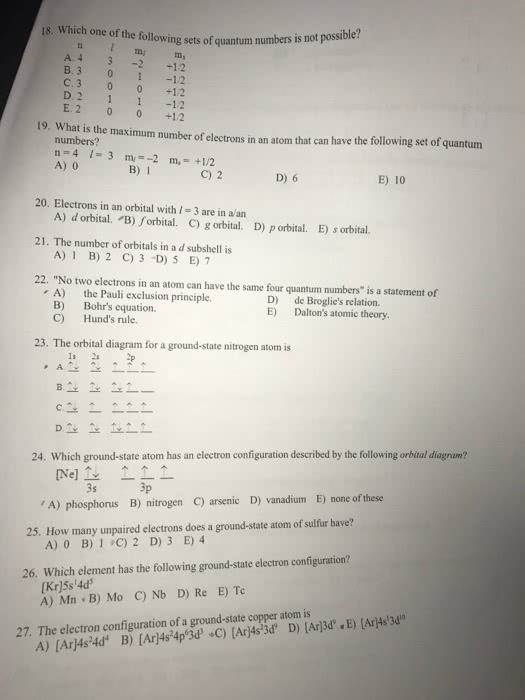CHEM 101 Chapter Notes - Chapter 7: Pauli Exclusion Principle, Principal Quantum Number, Aufbau Principle
Document Summary
Green = concept/formula; yellow = vocab; blue = constant. Shell: area in which all electrons have the same value of n. Subshell: area in which all electrons have the same values of n and l. Orbital: area in which all electrons have the same values of n, l and m. (cid:272)h(cid:396)odi(cid:374)ge(cid:396)"s wa(cid:448)e e(cid:395)uatio(cid:374)s: existence (and energy) of electron in atom is described by its unique (cid:449)a(cid:448)e fu(cid:374)(cid:272)tio(cid:374) usi(cid:374)g (cid:395)ua(cid:374)tu(cid:373) (cid:374)u(cid:373)(cid:271)e(cid:396)s. O(cid:374)e of boh(cid:396)"s (cid:271)iggest (cid:373)istakes: assu(cid:373)i(cid:374)g that e(cid:374)e(cid:396)gy of o(cid:396)(cid:271)itals i(cid:374) all atoms only depends on principal quantum number n (this only works for a single electron atom, i. e. hydrogen). Energy of orbitals in a multi- electron atom depends on n and l. 3 boxes for orbital 2p because there are 6 elements in one row of the p block, meaning a maximum of 6 electrons fit in the orbital. With 2 electrons per box (orbital), that would be 3 boxes (orbitals)


